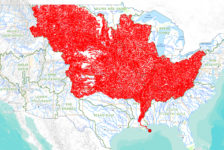A book review of Rain Gardens: Managing Water Sustainability in the Garden and Designed Landscape by Nigel Dunnett and Andy Clayden. Why are we always so magnetically attracted to water? Is it because water is the source of life or is it because it takes a huge part in our own existence, and even in our own flesh and blood? Perhaps one of the major reasons for our fascination with water lies in the fact that water has a calming effect on people. If dynamic, it energizes, if calm, it pacifies. These are just a few examples illustrating one aspect of the immeasurable value of water.

Front cover. Photo credit: Velislava Valcheva
Rain Gardens
Alas, nowadays we’re facing a problem deriving from our dramatically increasing demand for water. “Water brings our gardens and landscapes to life, but this once cheap and freely available resource is now becoming problematic with prolonged drought at one end of the spectrum and catastrophic flooding at the other,” this is how Nigel Dunnett and Andy Clayden, the two authors of the book, table the question for discussion, “Our view of water is changing: it is no longer in unlimited, cheap supply, or under our control; it is instead a potentially destructive force, and certainly one that we can no longer subjugate or take for granted.” How can rain gardens help us make the most of rainwater and design environmentally functional and esthetically beautiful landscapes? This is what the book’s philosophy is all about and it is definitely worth reading. See for yourself… Absorbing Content Straight from its introduction, this book makes reading more than just pleasant. The whole content is consequent, starting from the overall picture of the subject, and then fluently zooming in, deep into the essence and details of the matter. The experienced authors of the book have used terminologically accurate, yet easily comprehensible language for the text. To facilitate the process of assimilation, evenly distributed high-quality images and sketches visualize and exemplify the relevant text content. Get it HERE!
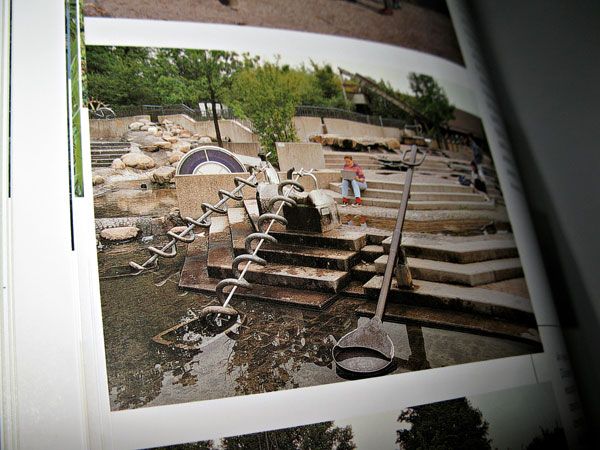
Inside. Photo credit: Velislava Valcheva
The numerous case studies present successful rain garden practices not only from the authors’ own experience, but from other designers’ projects from around the world. What makes the book a credible and authentic source, are the diagrams and the statistics supporting the expose in each section.
Rain Gardens. What Are They? The engrossing book is comprised of three sections, beginning with the first one termed “Rain gardens”. In this section, the reader is introduced to the wider aspect of water’s environmental role in gardens and explores the key principles that frame the rain garden approach.
The authors define rain gardens as a new, exciting concept, “
which covers all the possible elements that can be used to capture, channel, divert and make the most of the natural rain and snow that falls on a property”.
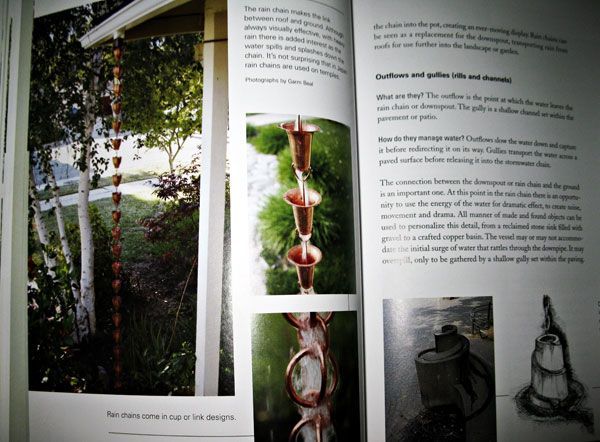
Inside. Photo credit: Velislava Valcheva
The first section focuses also on the role of water in sustainable landscapes and the interdependence between it and our changing climate. The next two topics discuss how the low-impact design methods of Bioretention and stormwater chain function. Reader’s attention unnoticeably switches over to the next section.
The Stormwater Chain Concept The second section explores in detail the particular components of rain gardens and how they interact together as a united whole, using the stormwater chain concept as a unifying element. Rain gardens aim to resemble the principles of the natural water cycle. To capture water run-off, a range of techniques and facilities is used. Increasing areas of planting, roof gardens, rainwater storage, permeable paving, rills and channels, stormwater planters and natural swimming ponds are some of the techniques used to reduce the amount of water lost in the public drainage system. Each of these features is explained thoroughly and illustrated in attractive way so that anything remains unclear.
Get it Here! 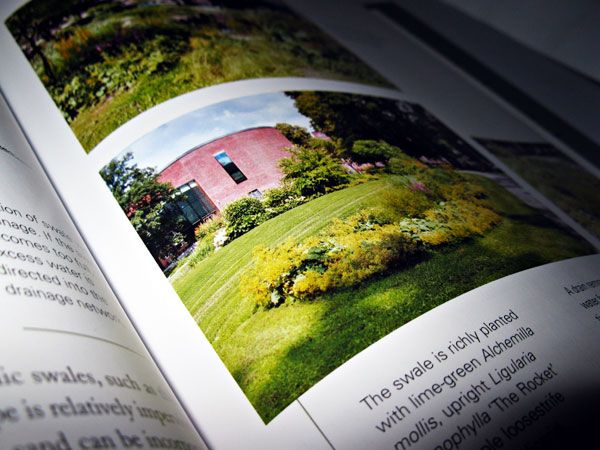
Inside. Photo credit: Velislava Valcheva
The final section is the most technical one, consisting of a rain garden plant directory. As rain gardens are neither wet nor dry, they periodically swing between the two conditions. Although this makes rain garden plants hard to typify, the detailed plant directory indicates plants’ suitability for different situations and classifies them in four groups of herbaceous plants, grasses, shrubs and trees.
Get it Here! 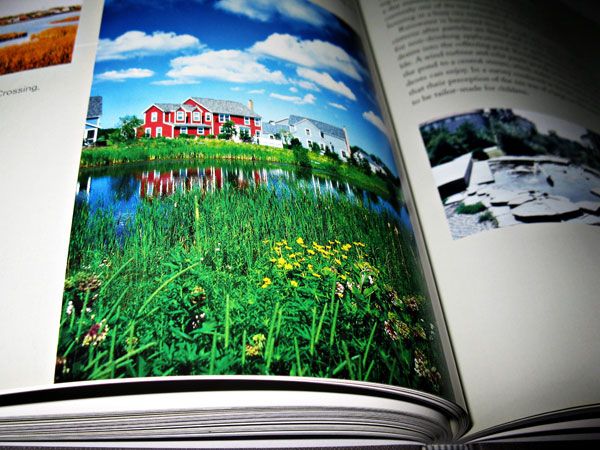
Inside. Photo credit: Velislava Valcheva
Having examined the whole book, we can generalize what makes rain gardens so specific.
As the authors say,
“Rain gardens are good for wildlife, encourage biodiversity, provide visual and sensory pleasure, and, above all, are sustainable in a changing climate.” 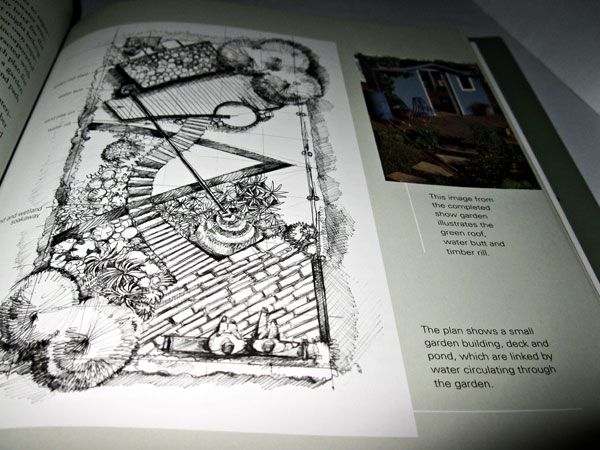
Inside. Photo credit: Velislava Valcheva
Rain Gardens is suitable reading for everyone. Landscape architects, garden designers, garden owners, or even an average person – everyone could learn a lot and apply a lot from it because sustainability isn’t only about water. Sustainability can be a way of life and this book can prove it to you in a most pleasing and creative way.
Pick up your copy of Rain Gardens today!
Review by Velislava Valcheva Return to Homepage
Published in Blog









